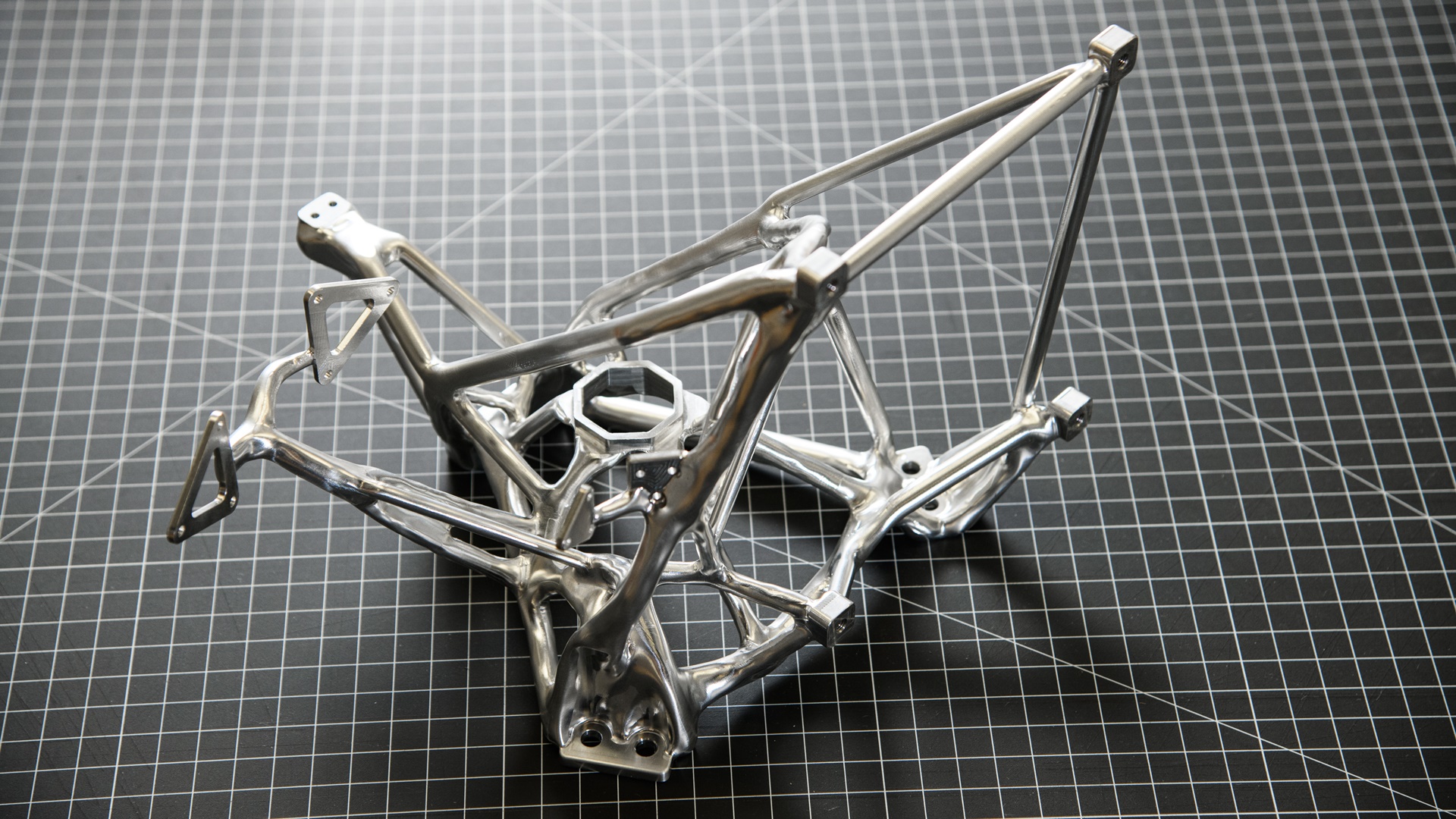- For NASA, building bespoke parts can be time consuming and troublesome but artificial intelligence can help.
- Research engineer Ryan McClelland proposed using AI to design parts with incredible results.
- Parts designed by AI tend to tolerate more structural load than those designed by humans.
The tech du jour that is artificial intelligence has been used for writing essays, optimising search engines and now, designing parts for spacecraft at NASA.
In a blog post published this week, NASA said that despite the parts looking like they’re alien bones, they tolerate higher structural loads and are developed in a fraction of the time that human-made parts are.
Building a part isn’t as easy as showing an AI which points need to be connected. A human is still needed to block paths where optical sensors and lasers may be used. However, once the human has designated the necessary parameters, the AI connects the dots. Further more, a human still needs to make sure the part the AI created will work so we’re still quite a way away from AI building full rockets on its own.
“You can perform the design, analysis and fabrication of a prototype part, and have it in hand in as little as one week,” explains research engineer Ryan McClelland.
According to NASA, McClelland came up with the idea of designing specialised, one-off parts using commercially available AI software. While it’s a novel idea, it actually works rather well and even impressed when it came to identifying potential points of failure.
“We found it actually lowers risk. After these stress analyses, we find the parts designed by the algorithm don’t have the stress concentrations that you have with human designs. The stress factors are almost ten times lower than parts designed by an expert human designer,” says the research engineer.
NASA says that some of the components designed in this way have been adopted in missions although these are in different stages of design and construction so whether they made it to the final mission is unclear. Some of these include astrophysics balloon observatories, Earth-atmosphere scanners, planetary instruments, space weather monitors, space telescopes and even the Mars Sample Return mission.
While AI-assisted design may not be suited for all industries, it works for NASA.
“If you’re a motorcycle or car company there may be only one chassis design that you’re going to produce, and then you’ll manufacture a bunch of them. Here at NASA, we make thousands of bespoke parts every year,” says McClelland.
Further more, 3D printing these parts using metals and resins gives scope for greater leaps forward in this space.
“These techniques could enable NASA and commercial partners to build larger components in orbit that would not otherwise fit in a standard launch vehicle, they could even facilitate construction on the Moon or Mars using materials found in those locations,” adds the research engineer.
The image featured in the header above was milled from a solid block of aluminium and has openings for lasers, human hands and connections for instruments. While a human defined the parameters, AI filled in the gaps and the result is complex but impressive.
[Image – Henry Dennis]

